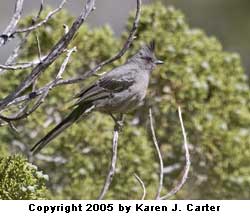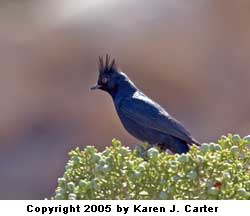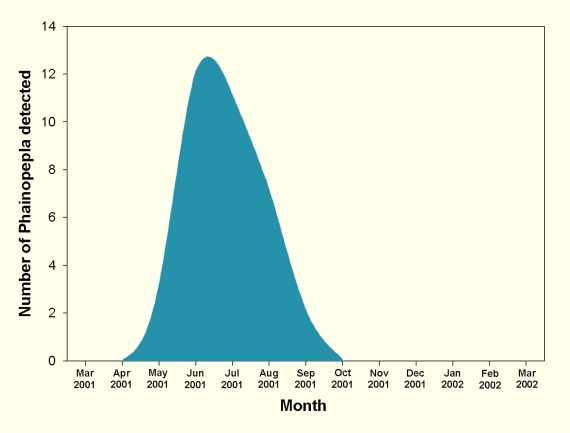 |
 |
Phainopepla
Phainopepla is the only member of the Silky Flycatcher group to occur in the United States. They are a resident bird and have the unusual habitat of moving from desert to coastal habitats during the breeding season. In winter, Phainopepla can be common in areas with mistletoe berries. Breeding habitats are not so restricted and consist of shrubby deserts, coastal sage scrub, chaparral and oak woodlands, always in conjunction with smallish trees for perching and placing nests. Phainopepla nest from early March through August and are found from sea level to 6,600 feet. Status: Not protected Back to Birds of the Etiwanda Fan
|
| Introduction | |
| Plant Communities of the Etiwanda Fan | |
| Amphibians and Reptiles of the Etiwanda Fan | |
| Birds of the Etiwanda Fan | |
| Mammals of the Etiwanda Fan | |
| References |
| San Bernardino County Museum - (909) 307-2669 - 2024 Orange Tree Lane, Redlands, California 92374 |
| © 2005 San Bernardino County Museum The information contained in the following pages was valid at the time of publication. The County of San Bernardino, Museum Department reserves the right to make changes and improvements at any time and without notice, and assumes no liability for damages incurred directly or indirectly as a result of errors, omissions or discrepancies. Please contact the webmaster with comments or suggestions. |


